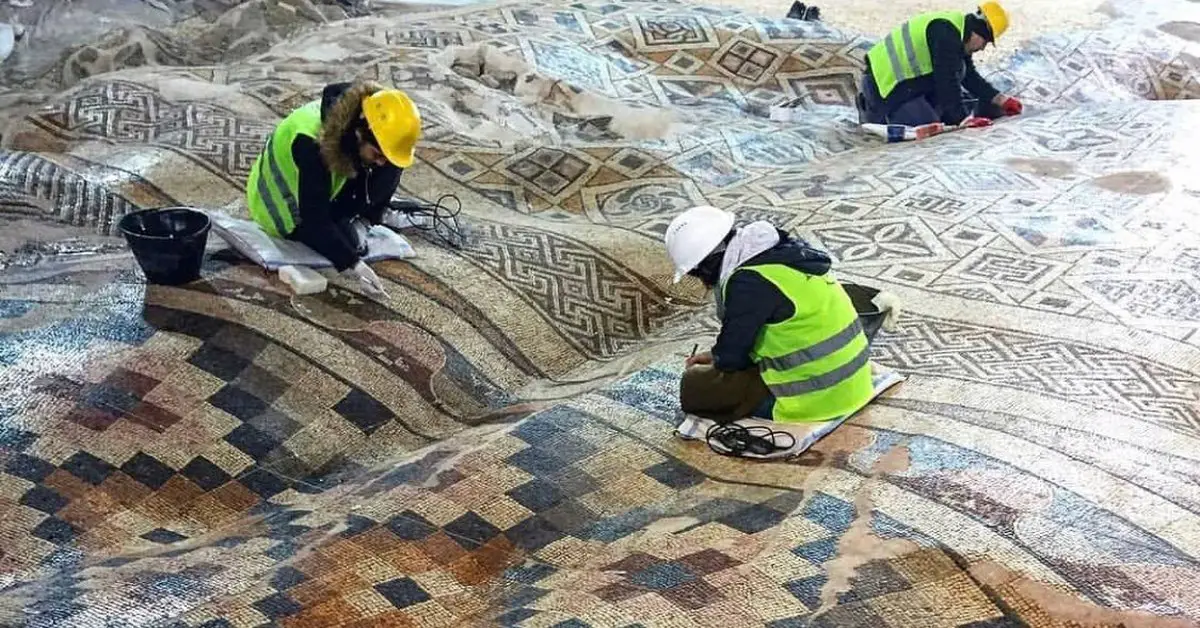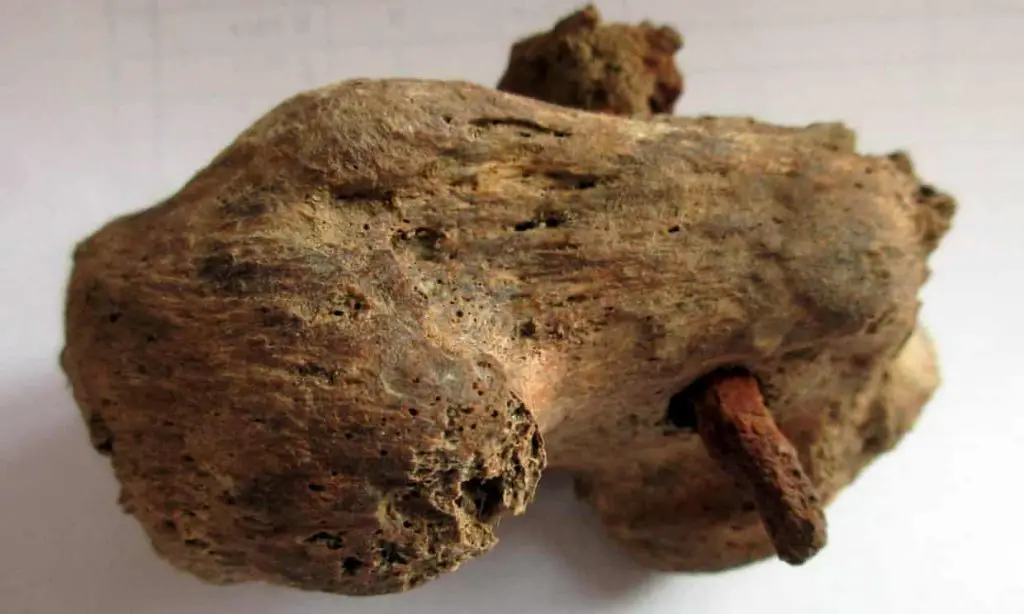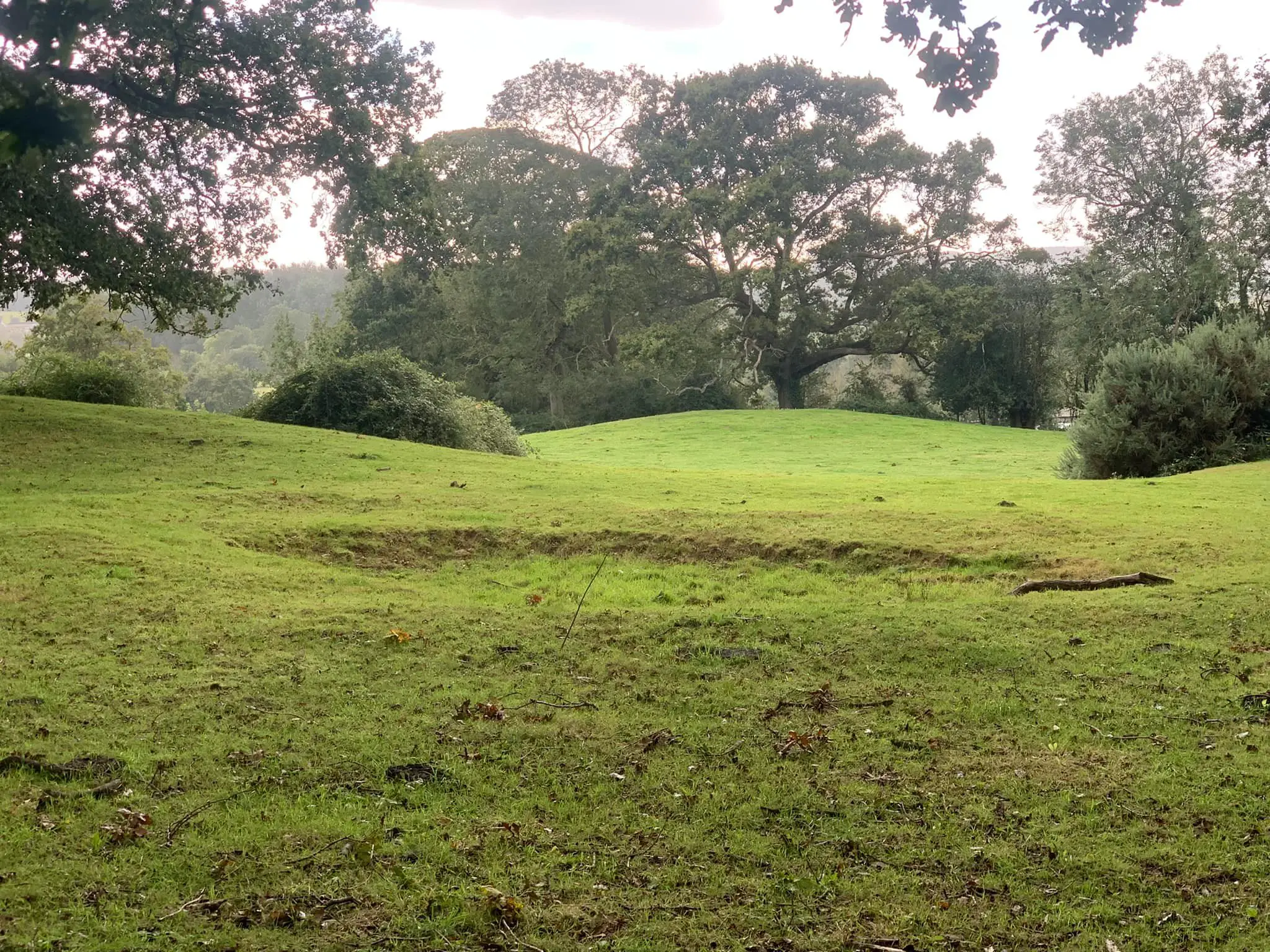Mammoths: Russia’s forests have a stark beauty, but the climate is unforgivably cold and brutal, particularly in winter.
During the last Ice Age that ended 10 thousand years ago, it is almost impossible to imagine how hunter gather societies dealt with the challenging climate.
But necessity is the mother of invention, and people back then did indeed adapt, and built structures to protect themselves from the worst Mother Nature had to offer in the harsh weather.
Contents
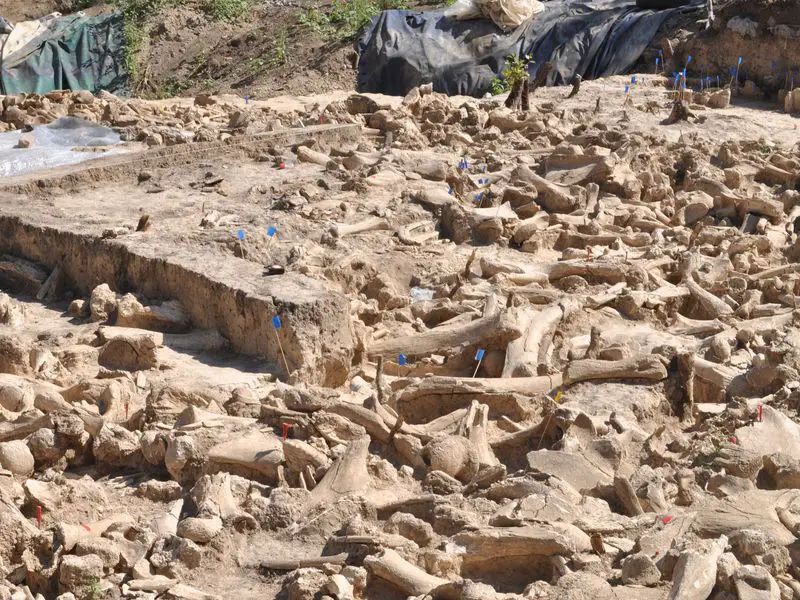
In 2014, archaeologists on a dig in a forest steppe in Kostenki discovered a remarkable example of what they’ve described as “Ice Age architecture.”
The dwelling is very large, round in shape and built with the bones of at least 60 woolly mammoths, but its purpose is so far not entirely clear. Was it shelter during the terrible cold of the Ice Age? Was it solely used to dry and store meat?
Settlement
Back then people in the community ate fox, reindeer and horse flesh, and evidence has been detected that suggests they used this dwelling to prepare and keep the meat.
Just as importantly, researchers have found evidence of plants within the ashes in the indoor fire area. That means that the diet of the people in this settlement was perhaps more varied than archaeologists once imagined, and included carrots, and maybe even potatoes.
Although other mammoth bone structures have been found in Russia before, and in other places across eastern Europe, this is the oldest – 25,000 years, experts say.

The bones with which the dwelling was constructed are still in good shape, considering the passage of time. However, there is no evidence of what the roof might have been made of, and the more testing the archaeologists do, the more questions their findings provoke.
For example: how on earth did hunters back then retrieve the carcasses of 60 woolly mammoths and get them to the site? These beasts weighed tons, and even if the animals had been skinned elsewhere, it would have necessitated a huge effort.
Exceptional
“The size of the structure makes it exceptional among its kind, and building it would have been time-consuming,” “This implies that it was meant to last, perhaps as a landmark, a meeting place, a place of ceremonial importance, or a place to return to when the conditions grew so harsh that shelter was needed,” Bosch was not involved with the new research on this “ truly exceptional find”
Marjolein Bosch, a zooarchaeologist at the University of Cambridge.
Did the hunters kill them, or did they find them dead from other causes (trying to navigate across a river and drowning, for example) and drag them back to break apart their skeletons? And why this particular location? Was there a source of fresh water nearby that made settling the community there logical, and a way of ensuring continued sustenance?
Definitely more questions than answers right now, but experts on the dig say that’s the case with almost all archaeological undertakings.
Inside the structure, there is evidence that animals were kept in them. There is also remains of wood.
This implies that trees existed nearby, and they used fire not just for heat or cooking, but perhaps even as a source of light at night.
Alexander Pryor, an archaeologist with the University of Exeter in England and head of the study of the find, published a paper in the academic journal Antiquity in 2020.
Ritualistic
He said in an interview last year, “Clearly a lot of time and effort went into building this structure, so it was obviously important to the people who made it for some reason.” Because there are pits and other bone dwellings at the site, some have suggested rituals of some kind may have occurred there too, along with practical activities like food storage.
Pryor doesn’t dismiss that possibility out of hand, noting that humans have engaged in rituals of many kinds almost since they evolved.
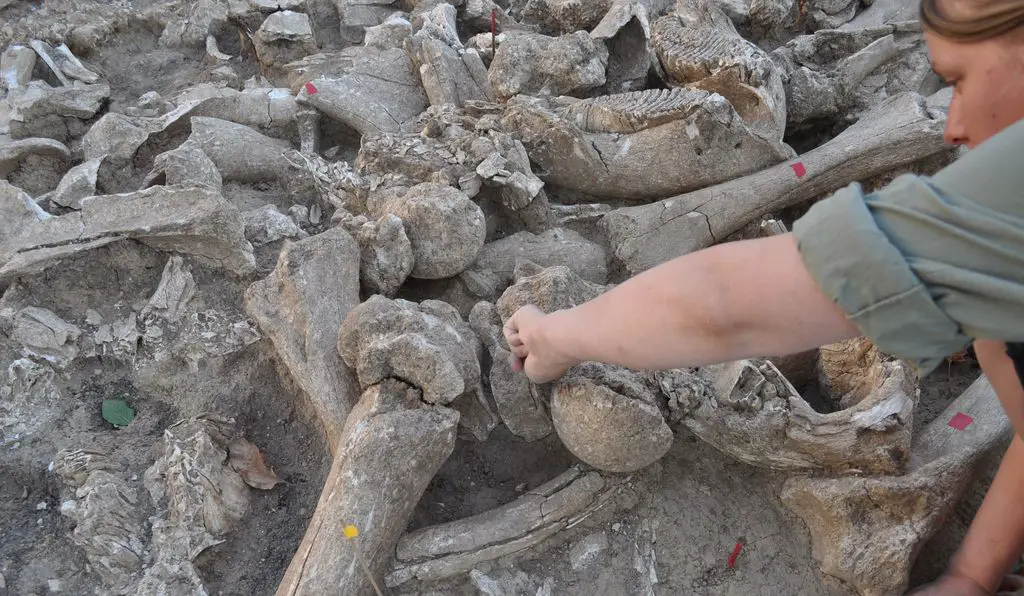
Mammoth Graveyard
Many other academics and researchers have have hypothesized that as the bone structure is so big and complicated that it obviously significate.
It is possible that its purpose may have been ritualistic. Dr. Alexander Pryor notes that ritual and food were a vital part of societies daily lives and played a central role in the lives of our ancestors. This looks like a massive mammoth graveyard but these bones were brought here by man.
This is a significant find by archaeologists as nothing on this scale has been discovered before. Archaeologists have discovered buildings constructed from the huge bones of mammoths in Eastern Europe.
If you like this article, then please follow us on Facebook, Instagram
These structures are on a small scale, with majority of them being just 6.5 feet across (2 metres). It is thought that these small structures were used as dwellings or hunting shelters.
Another Article From Us: This Carpet is Actually the World’s Biggest Roman Mosaic
“This project is giving us real insight into our human ancestors,” Pryor said. Perhaps that, in the end, is the most valuable result of this dig – it helps us understand a great deal about our history, which may, in a sense, reveal a great deal about our future.
